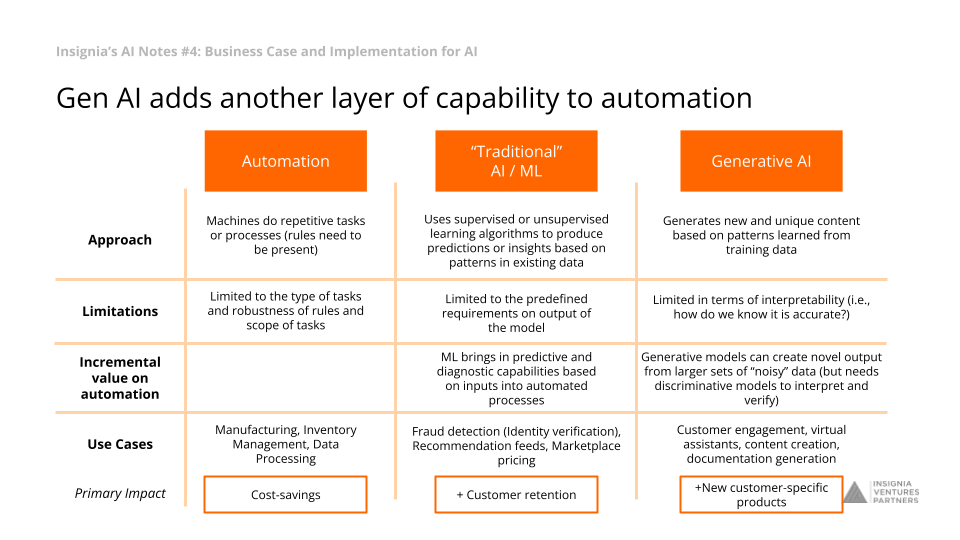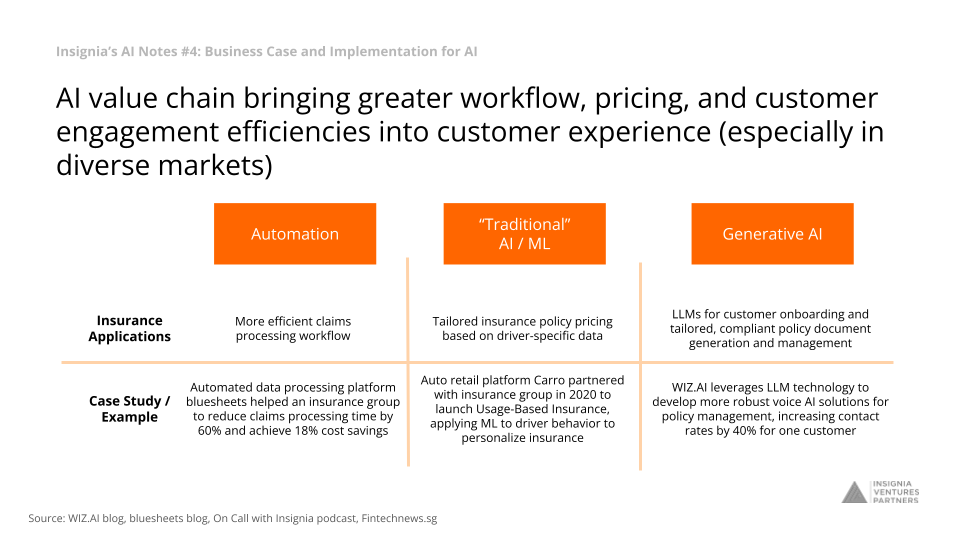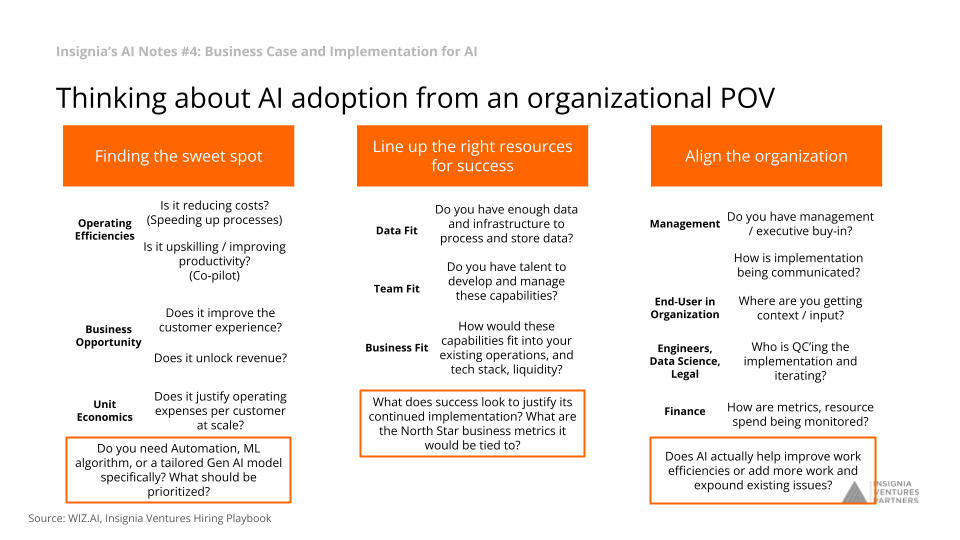Do you really need AI?
In the fast-paced, digitally-driven business landscape, companies are leveraging cutting-edge technologies like automation, Artificial Intelligence (AI), and generative AI to catalyze growth and even profitability. While they share common threads, these technologies each bring unique capabilities to the table. Before even digging the possibilities of these technologies for your business and allocating massive resources, it’s important to figure out what your business really needs and how to cascade implementation across an entire organization.
In this edition of AI notes, we use the insurance industry as an illustrative example to unpack these technologies, their applications, and the potential implications for business success. We also outline an approach to drive use case adoption across an organization.

Automation
Automation involves machines performing repetitive tasks or processes based on established rules, resulting in significant efficiency gains. However, its effectiveness is largely bound by the robustness of the rules and the scope of tasks.
A perfect example in insurance is claims processing. By using automated data processing platform bluesheets, an insurance group was able to streamline their workflow, reducing claims processing time by 60% and achieving 18% cost savings. The primary impact of automation is thus cost-saving, achieved by eliminating manual errors and improving process efficiency.
Artificial Intelligence (AI)
AI, and more specifically Machine Learning (ML), uses supervised or unsupervised learning algorithms to produce predictions or insights based on patterns in existing data. While powerful, ML’s capabilities are limited to the predefined requirements of the model’s output.
Auto retail platform Carro, for example, partnered with an insurance group to launch Usage-Based Insurance. By applying ML to driver behavior data, they personalized insurance policy pricing. Thus, ML offers an incremental value to automation by introducing predictive and diagnostic capabilities that improve customer retention and provide additional cost savings.
Generative AI
Generative AI represents another evolution in technological capability. It learns patterns from training data and generates new and unique content, albeit with some limitations in terms of interpretability.
Generative AI applications can be found in customer engagement and documentation generation. WIZ.AI, for instance, leveraged large language model (LLM) technology to develop robust voice AI solutions for policy management (contacting customers for payments), increasing contact rates by 40% for a customer. Generative AI models create novel output from larger sets of “noisy” data, further enhancing customer retention and enabling the creation of new, customer-specific products.

Implementing AI: An Organizational Perspective

The journey to harness the benefits of automation, AI, and generative AI requires a systematic approach. Businesses need to find the sweet spot, balancing operating efficiencies, business opportunity, and unit economics. Key considerations include whether the technology reduces costs, improves customer experience, upscales productivity, and justifies operating expenses per customer at scale.
Once the need for automation, ML algorithms, or tailored generative AI models is established, lining up the right resources for success becomes crucial. This involves assessing data fit, team fit, and business fit. Also, clear success metrics must be set to justify continued implementation.
Aligning the organization is another critical step. It requires obtaining management buy-in, gathering context and input from end-users, ensuring quality control by engineers, data scientists, and legal teams, and monitoring resource spend by finance teams.

The road to AI adoption is complex, and it’s essential to ask if AI will truly improve work efficiencies or add more work and expound existing issues. By navigating these complexities, businesses can unlock the transformative potential of automation, AI, and generative AI, driving growth and profitability in an increasingly digital world.
Paulo Joquiño is a writer and content producer for tech companies, and co-author of the book Navigating ASEANnovation. He is currently Editor of Insignia Business Review, the official publication of Insignia Ventures Partners, and senior content strategist for the venture capital firm, where he started right after graduation. As a university student, he took up multiple work opportunities in content and marketing for startups in Asia. These included interning as an associate at G3 Partners, a Seoul-based marketing agency for tech startups, running tech community engagements at coworking space and business community, ASPACE Philippines, and interning at workspace marketplace FlySpaces. He graduated with a BS Management Engineering at Ateneo de Manila University in 2019.